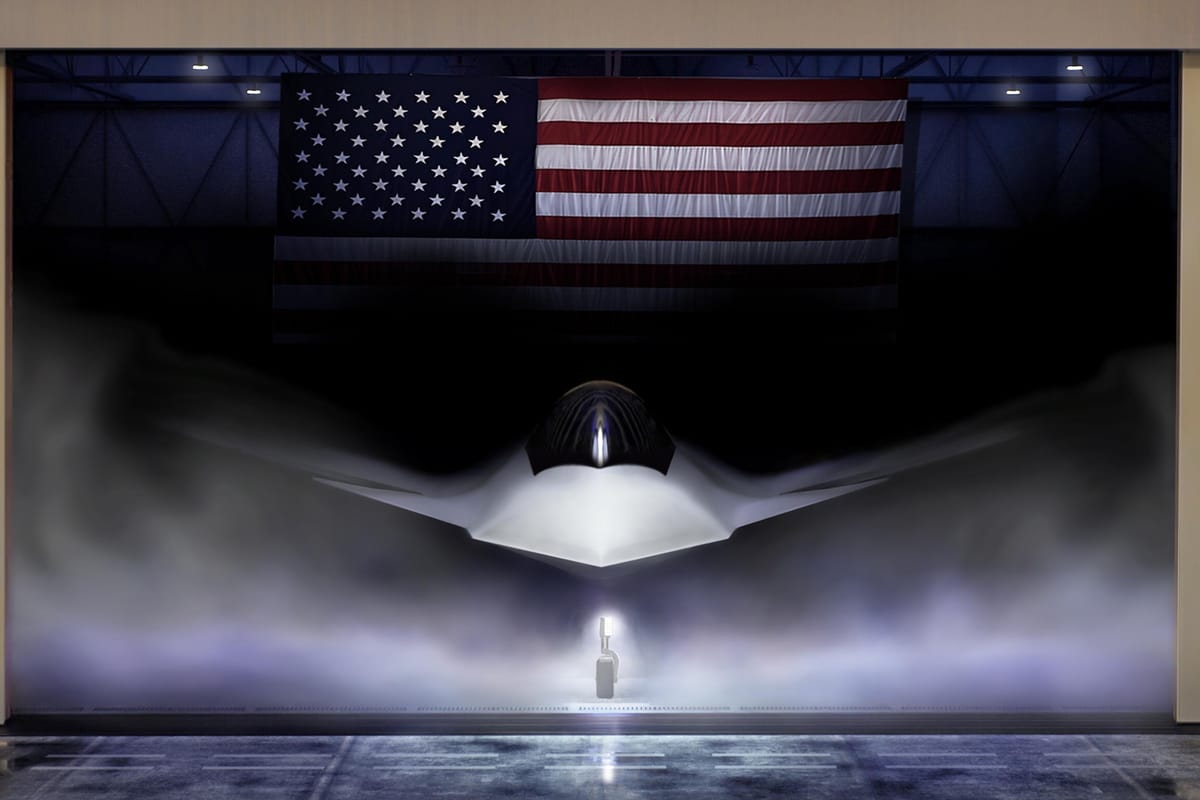

A Historic Announcement from the White House
On March 21, 2025, President Donald Trump stood in the Oval Office, flanked by Defense Secretary Pete Hegseth and Air Force Chief of Staff Gen. David Allvin, to declare a monumental step forward for American military might. Boeing, a titan of the aerospace industry, has been awarded the contract to build the U.S. Air Force’s next-generation fighter jet, designated the F-47. Trump hailed the decision as the culmination of a rigorous competition among America’s top aerospace firms, emphasizing that an experimental version of this stealth aircraft has been secretly flying for nearly five years. ‘It’s something the likes of which nobody has seen before,’ Trump said, touting its unmatched speed, maneuverability, and payload capacity.
The Next Generation Air Dominance Program
The F-47 emerges from the Next Generation Air Dominance (NGAD) program, a strategic initiative launched over a decade ago to ensure U.S. air superiority against rising global threats, particularly from China. This sixth-generation fighter jet is designed to replace Lockheed Martin’s aging F-22 Raptor, which, while revolutionary in its time, faces limitations against modern anti-access/area-denial systems fielded by adversaries. Unlike its predecessors, the F-47 will serve as a quarterback in the skies, coordinating with a fleet of advanced drones under the Collaborative Combat Aircraft program. These unmanned systems, developed by companies like General Atomics and Anduril Industries, will enhance the jet’s ability to penetrate contested airspace and overwhelm enemy defenses.
Boeing’s Triumph Amid Challenges
For Boeing, securing the NGAD contract is a lifeline after years of turbulence. The company has weathered worker strikes, lawsuits over commercial airliner defects, delays in delivering new Air Force One planes, and setbacks with the Starliner spacecraft. The F-47 contract, valued at an initial $20 billion with potential for hundreds of billions over decades, signals a resurgence for Boeing’s defense division. ‘We recognize the importance of designing, building, and delivering a 6th-generation fighter capability for the United States Air Force,’ said Steve Parker, interim president of Boeing Defense, Space & Security, underscoring the firm’s massive investment in this project. The victory also marks a blow to rival Lockheed Martin, whose F-35 program has faced criticism for cost overruns and delays.
Strategic Implications for National Security
The F-47’s advanced stealth, cutting-edge engines, and AI-driven systems position it as a game-changer in modern warfare. Gen. David Allvin described it as ‘the most advanced, lethal, and adaptable fighter ever developed,’ designed to outpace and outmatch any adversary. This capability is critical as China advances its own fifth- and sixth-generation fighters, alongside long-range missiles and air defense networks that challenge U.S. dominance in the Indo-Pacific. The jet’s ability to pair with drones amplifies its reach, allowing it to project power deep into hostile territory while minimizing risk to pilots. ‘This is a historic investment in the American military,’ Hegseth said, framing it as a signal to allies and foes alike that the U.S. remains an unrivaled force.
A Boost for American Industry
Beyond its military significance, the F-47 program promises an economic windfall. Boeing’s production facilities, particularly in St. Louis, Missouri, will see a surge in activity, creating thousands of high-skilled jobs. The contract’s ripple effects will bolster the U.S. industrial base, a priority for leaders wary of over-reliance on foreign supply chains. Trump hinted at potential foreign sales, noting that allies are already expressing interest in the jet. However, critics question the program’s cost, pointing to the Pentagon’s struggles with the F-35’s $1.7 trillion lifecycle price tag. Supporters counter that the F-47’s cutting-edge technology justifies the investment, especially given the stakes of future conflicts.
Looking Ahead
The F-47’s rollout marks a bold leap into the future of aerial combat. With flight tests expected during Trump’s administration and ending in January 2029, the Air Force aims to deploy more of these jets than the 180 F-22s currently in service. As the Navy pursues its own sixth-generation fighter, the F/A-XX, Boeing remains a contender, potentially solidifying its dominance in military aviation. For now, the F-47 stands as a testament to American innovation and resolve, ready to defend the nation’s interests in an increasingly volatile world.
Dues are $12 per year. Member benefits:
✅ Ad-Free Website Viewing
✅ Advocacy for Republican Seniors
✅ 120+ Senior Discounts
✅ Member Only Newsletters